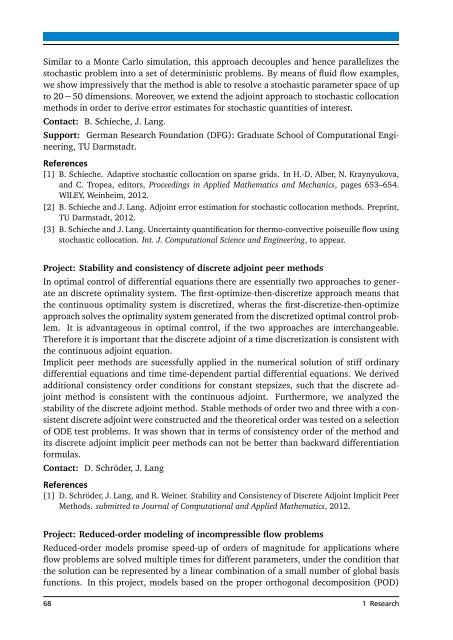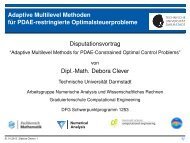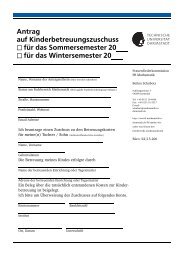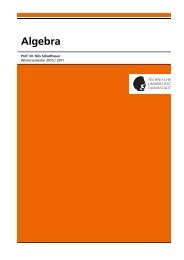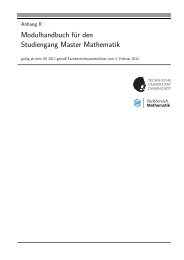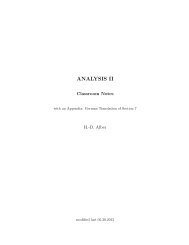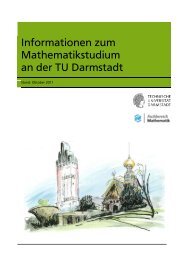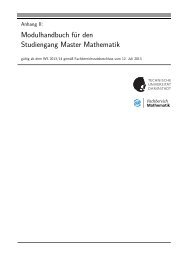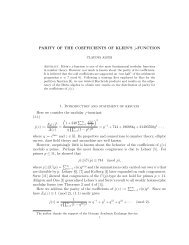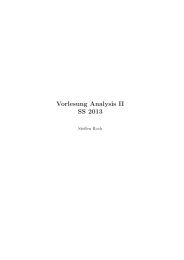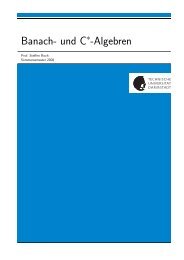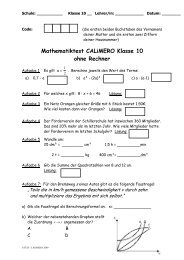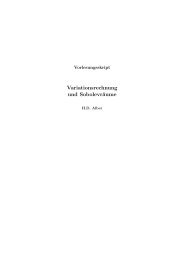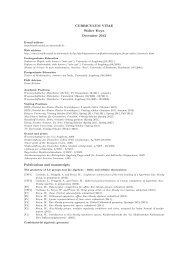Biannual Report - Fachbereich Mathematik - Technische Universität ...
Biannual Report - Fachbereich Mathematik - Technische Universität ...
Biannual Report - Fachbereich Mathematik - Technische Universität ...
Create successful ePaper yourself
Turn your PDF publications into a flip-book with our unique Google optimized e-Paper software.
Similar to a Monte Carlo simulation, this approach decouples and hence parallelizes the<br />
stochastic problem into a set of deterministic problems. By means of fluid flow examples,<br />
we show impressively that the method is able to resolve a stochastic parameter space of up<br />
to 20−50 dimensions. Moreover, we extend the adjoint approach to stochastic collocation<br />
methods in order to derive error estimates for stochastic quantities of interest.<br />
Contact: B. Schieche, J. Lang.<br />
Support: German Research Foundation (DFG): Graduate School of Computational Engineering,<br />
TU Darmstadt.<br />
References<br />
[1] B. Schieche. Adaptive stochastic collocation on sparse grids. In H.-D. Alber, N. Kraynyukova,<br />
and C. Tropea, editors, Proceedings in Applied Mathematics and Mechanics, pages 653–654.<br />
WILEY, Weinheim, 2012.<br />
[2] B. Schieche and J. Lang. Adjoint error estimation for stochastic collocation methods. Preprint,<br />
TU Darmstadt, 2012.<br />
[3] B. Schieche and J. Lang. Uncertainty quantification for thermo-convective poiseuille flow using<br />
stochastic collocation. Int. J. Computational Science and Engineering, to appear.<br />
Project: Stability and consistency of discrete adjoint peer methods<br />
In optimal control of differential equations there are essentially two approaches to generate<br />
an discrete optimality system. The first-optimize-then-discretize approach means that<br />
the continuous optimality system is discretized, wheras the first-discretize-then-optimize<br />
approach solves the optimality system generated from the discretized optimal control problem.<br />
It is advantageous in optimal control, if the two approaches are interchangeable.<br />
Therefore it is important that the discrete adjoint of a time discretization is consistent with<br />
the continuous adjoint equation.<br />
Implicit peer methods are sucessfully applied in the numerical solution of stiff ordinary<br />
differential equations and time time-dependent partial differential equations. We derived<br />
additional consistency order conditions for constant stepsizes, such that the discrete adjoint<br />
method is consistent with the continuous adjoint. Furthermore, we analyzed the<br />
stability of the discrete adjoint method. Stable methods of order two and three with a consistent<br />
discrete adjoint were constructed and the theoretical order was tested on a selection<br />
of ODE test problems. It was shown that in terms of consistency order of the method and<br />
its discrete adjoint implicit peer methods can not be better than backward differentiation<br />
formulas.<br />
Contact: D. Schröder, J. Lang<br />
References<br />
[1] D. Schröder, J. Lang, and R. Weiner. Stability and Consistency of Discrete Adjoint Implicit Peer<br />
Methods. submitted to Journal of Computational and Applied Mathematics, 2012.<br />
Project: Reduced-order modeling of incompressible flow problems<br />
Reduced-order models promise speed-up of orders of magnitude for applications where<br />
flow problems are solved multiple times for different parameters, under the condition that<br />
the solution can be represented by a linear combination of a small number of global basis<br />
functions. In this project, models based on the proper orthogonal decomposition (POD)<br />
68 1 Research


